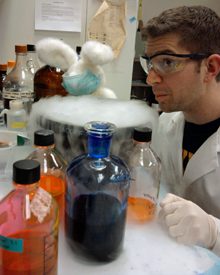Jared Rosen L&S Sciences
Molecular Protection Mechanism of the Gastric H,K ATPase
The H, K ATPase is a P-type ATPase proton pump that is highly expressed in the gastric parietal cell. This enzymatic proton pump is responsible for creating the highly acidic environment in the lumen of the stomach. The protein is comprised of a larger catalytic “alpha” subunit that creates the high proton gradient and a smaller “beta” subunit. The goal of my research project is to gain a deeper insight into how it is that the H,K ATPase protects itself from digestion by the very acid that it produces to break down other ingested proteins. Previous work in our lab suggests that the -subunit may act in a protective capacity to allow the -subunit to remain operational even in the highly acidic (pH 1-2) environment of the stomach lumen, however the molecular mechanism of protection still requires further investigation. Using a combination of enzymatic activity assays and immunoblotting/immunoassays we are studying the mechanism of the two subunits and potential molecular mechanisms that the -subunit might employ to protect the -subunit.
Message To Sponsor
This award is more than just money to pay for my living expenses while I perform research. It is recognition of the fact that my dreams and passions are indeed sustainable. It is the first bit of actual proof that all my hard work and dedication to the sciences can pay off and that I can be successful in turning scientific research into a career. I am very grateful to have this recognition and opportunity this summer.